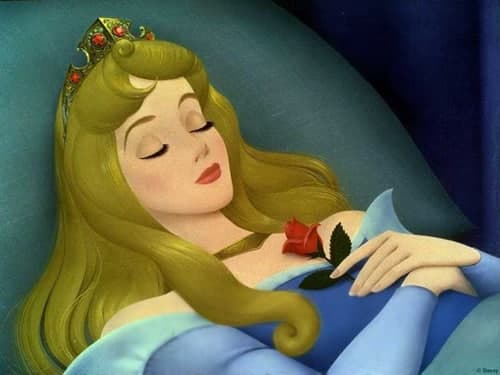Film
Top 10 Fun Facts About Sleeping Beauty Fan Never Know
Sleeping Beauty is a 1959 American animated musical fantasy film produced by Walt Disney based on the 1697 fairy tale Sleeping Beauty by Charles Perrault. And you may don’t know these secrets behind this cartoon. Find it!

10. She was reportedly based on two real-life French princesses who both died young
Sleeping Beauty’s story can be traced back to the 15th century, but her roots may tie all the way back to the 14th century – and possibly earlier. The story of Aurora, AKA Sleeping Beauty, is said to have been inspired by the early life of Margaret of Valois (Marguerite de Valois). While I’ve not personally seen any evidence that this French Princess is indeed Sleeping Beauty, it’s widely reported that she also fell into an eternal sleep when she was a teenager in order to end a feud between two powerful families in France – which suggests she suffered from some kind of curse! Some even say that the story is a metaphor for Margaret’s death.
Margaret of Valois – one inspiration for Sleeping Beauty?
…and the other princess was Jeanne d’Evreux, who also reportedly died from a curse when she was 17.
9. Sleeping Beauty has been in a coma since 1959!
In 1959 Walt Disney produced an animated film that was intended to be a prime example of how the latest technology could create something stunning and realistic. The story itself wasn’t exactly new but what it did introduce to audiences was some cutting-edge animatronics which would add extra flair to the movie (for example, during Aurora’s “awakening” by the prince). But there were some problems with this aspect of the production because the animatronics in the scene were simply not working properly. The prince’s movements were stiff and awkward – which angered Walt Disney who then imposed a strict deadline on the animators to work double-time to fix this mistake.
The animators either never got round to finishing the scene (and therefore it was left as is) or created something that was truly horrifying. Since 1959 we’ve had all kinds of rumours about what actually happened in this scene, but here’s what we know: Aurora wakes up and appears to float above her bedside while she speaks with her prince for a few seconds before falling down onto her bed again (so basically she stayed asleep). Some people would argue that she still seemed drugged despite this unsuccessful attempt at waking her up.
In 2011, an animator who worked on the film at the time confirmed that the scene was actually supposed to show Aurora waking up from a coma and that this is why her clothing is so different to how she appeared in the rest of the movie – because it represents a hospital gown.
8. She may have been based on a real person
Some believe that Sleeping Beauty’s story was inspired by the early life of Catherine de Medici. She lived from 1519 – 1589 and was the daughter of Lorenzo II de’ Medici, Grand Duke of Urbino. Not only did she live a cursed childhood (her mother died when she was a baby and her father died when she was 13) but there are those who argue that this may be why later in life Catherine became involved with politics as well as illicit love affairs. Her husband Henri II also reportedly had an intense fascination with dark arts, witchcraft and astrology which some think is reflected in the wickedness of the Queen in Sleeping Beauty’s story.
7. The prince was based on a real-life prince!
Prince Phillip – the original Prince Charming?
Based on his name, you can probably guess that Prince Phillip (AKA The Prince) was inspired by an actual historical figure: the Duke of Burgundy Philip the Good. But what does this have to do with Sleeping Beauty? Well, according to some reports it’s believed that one day during a hunting trip near Brussels, Belgium under an oak tree he met the character of Princess Aurora who had hidden from him after she saw him killing off wild animals with his crossbow. This is why both characters are so determined throughout their story to find each other again even though they’ve only just met.
6. She has animals that almost definitely don’t belong in this time period
If you’ve ever seen the original film, you’ll know that there are some fairly random animals throughout the tale. Yes, it’s set at a time when people used horses for transport but then what is this moose doing here? And why is he wearing an armour-like outfit? Also there’s a crow who sits on top of a teapot and gets involved with every meal scene – again, what’s his story?! Well needless to say they didn’t exist during any point of the history the movie is set in so they must have been added by Disney! But if so…why??
It turns out there are many theories about these miscellaneous creatures who all have their own fan pages on the internet. Some people believe that they’re a reference to the crow and rose-bearing ant from Charles Perrault’s version of the tale, but this doesn’t answer why we also have a bird wearing armour…
5. The king and queen were originally meant to be eaten by the dragon (or die in another way)
According to some reports it was intended for King Hubert and Queen Leah to both suffer brutal deaths at the hands of Maleficent – either by being burnt alive or eaten by her dragon form. This is why throughout the film there are such dark undertones as well as references to death (like when Prince Phillip says goodbye to his parents before he goes off to find Aurora). It’s said that Walt Disney had the story changed once he signed up because of his young daughters – they apparently begged him to let them keep their “happy ending” which is why he ended up changing the story so that Maleficent would just die instead of harming anyone else.
4. Her name was almost Clarice
This might not seem like a big deal but if you’ve ever read or seen Sleeping Beauty in another language (as I have with this Swedish version) you will know how strange it sounds when her name ends up being something completely different! But…if you can imagine ‘Aurora’ as ‘Clarice’ then it makes slightly more sense (and is actually quite sweet). This is because Aurora comes from the Latin word for ”dawn” or ”dawning” which is ‘aurora’ so it makes sense that her name was originally the same as the Latin word for dawn too. It’s thought that Walt Disney changed her name because of another popular Disney film which featured a character called Aurora, who appeared in animated form in The Sleeping Beauty – apparently he didn’t want to risk any confusion between the two films or characters!
3. She really is 16 years old!
According to official records (and logic) Princess Aurora is definitely 16 years old when she finally wakes up from her deep slumber. Interestingly this means she would have been just 14 at the time Rapunzel was woken up (which some people think is creepy). But if Emma Watson could still play Hermione Granger when she was 32 then it’s not that far-fetched to imagine that the same could have happened for Sleeping Beauty!
2. There wasn’t originally a Prince Phillip
It might seem strange, but there was no Prince character in the original version of this tale which just goes to show how Disney can change things around and add new characters whenever he wants. Some people think that the name ‘Phillip’ is simply a shortened version of ‘Philip’ which is an old English version of the name ‘Philippus’. This means we’ve got Saint Philip who was one of Jesus Christ’s apostles and we also have Philip II of Macedon (a Greek king) so it makes sense why they went this name too!
1. Maleficent wasn’t actually evil
This might seem hard to believe but in the original story ”Sleeping Beauty” by Charles Perrault it’s actually Aurora’s other fairy godmother who turns out to be evil and ruins everything! She makes a deal with an ugly witch in order to get rid of her daughter so that she can take over as queen after King Stefan dies. It turns out that Walt Disney liked the idea of having an evil character who literally stole all of the limelight from everyone else – especially since the other characters were mostly good which meant there was no real excitement or thrill involved when they appeared on screen. But once he signed up Hans Cbslager (a writer) helped him change this around and create the script we know and love today.

